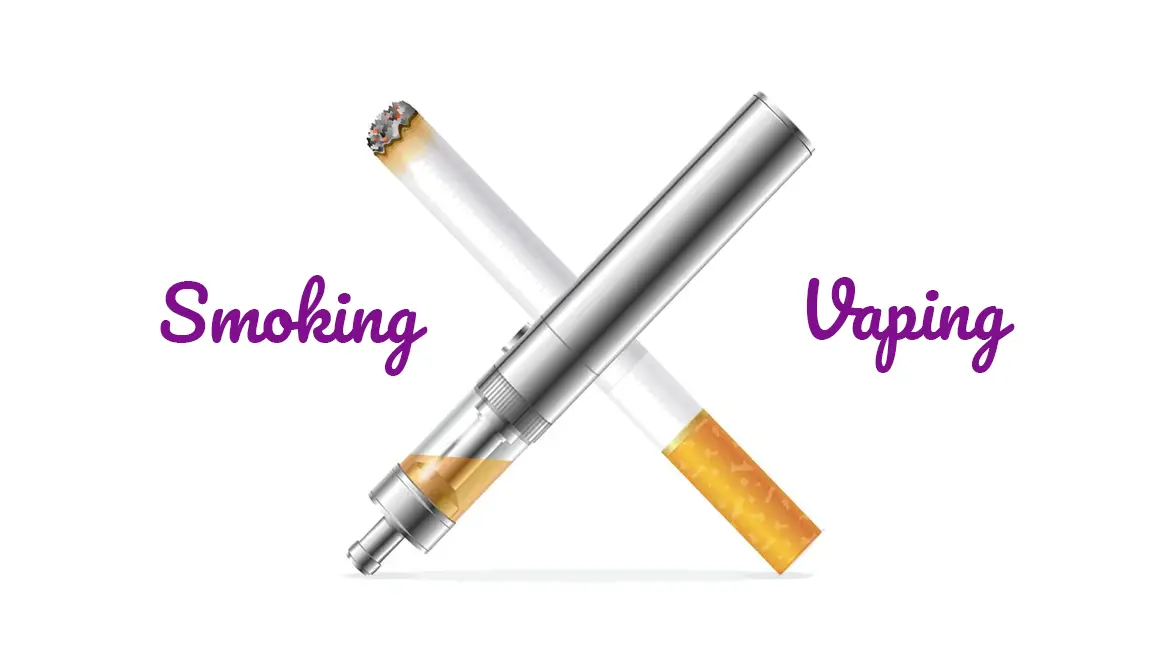In recent years, both vaping and smoking have become prevalent methods of consuming nicotine and other substances. Many people believe that vaping is safer than smoking traditional cigarettes. But, the health risks associated with both practices differ in important ways.
Vaping and smoking
Let’s start with smoking. When someone smokes a cigarette, they inhale tobacco smoke, which contains over 7,000 chemicals. Among these chemicals are at least 70 known to cause cancer, such as tar, formaldehyde, and arsenic. These substances can damage almost every organ in the body, leading to serious health problems. They could be lung cancer, heart disease, stroke, and chronic obstructive pulmonary disease (COPD). Smoking also harms the respiratory system by causing chronic bronchitis and increasing the risk of infections like pneumonia.
On the other hand, vaping involves inhaling and exhaling aerosol, often called vapor, produced by an e-cigarette or similar device. This vapor typically contains fewer harmful chemicals than cigarette smoke because it doesn’t involve burning tobacco. Instead, vaping devices heat a liquid (e-liquid or vape juice) that usually contains nicotine, flavorings, and other chemicals.
However, vaping is not without risks. The aerosol from vaping devices can contain harmful substances such as nicotine (which is addictive), ultrafine particles, flavoring chemicals like diacetyl (linked to serious lung disease), volatile organic compounds, and heavy metals such as nickel, tin, and lead. While these chemicals are generally found at lower levels than in cigarette smoke. However, their long-term health effects are still being studied.
One of the biggest concerns with vaping is its impact on lung health. There have been cases of severe lung injury associated with vaping, known as EVALI (e-cigarette or vaping product use-associated lung injury). This condition emerged particularly with the use of vaping products containing THC (the psychoactive compound in marijuana) or vitamin E acetate as additives. Although, it’s less common with nicotine-only vaping products.
Comparison
Nicotine, present in most vaping liquids, is highly addictive and can harm brain development in adolescents and young adults. It can also contribute to cardiovascular problems and increase the risk of addiction to other substances. Furthermore, the flavors added to vape liquids, while appealing to users, may pose additional risks as their long-term inhalation effects are not fully understood.
When comparing the health risks between vaping and smoking, it’s important to recognize that both activities carry potential harms. Smoking cigarettes remains one of the leading causes of preventable death worldwide, primarily due to its direct link to cancer and cardiovascular disease. Vaping, while potentially less harmful than smoking, is not risk-free and may still pose significant health risks, especially with long-term use.
For individuals who are trying to quit smoking, vaping may offer a less harmful alternative. However, it’s essential to note that quitting nicotine altogether is the best way to reduce health risks associated with both smoking and vaping. Supportive resources such as counseling and FDA-approved cessation aids (like nicotine patches or gum) can significantly increase the chances of successfully quitting.

Good article